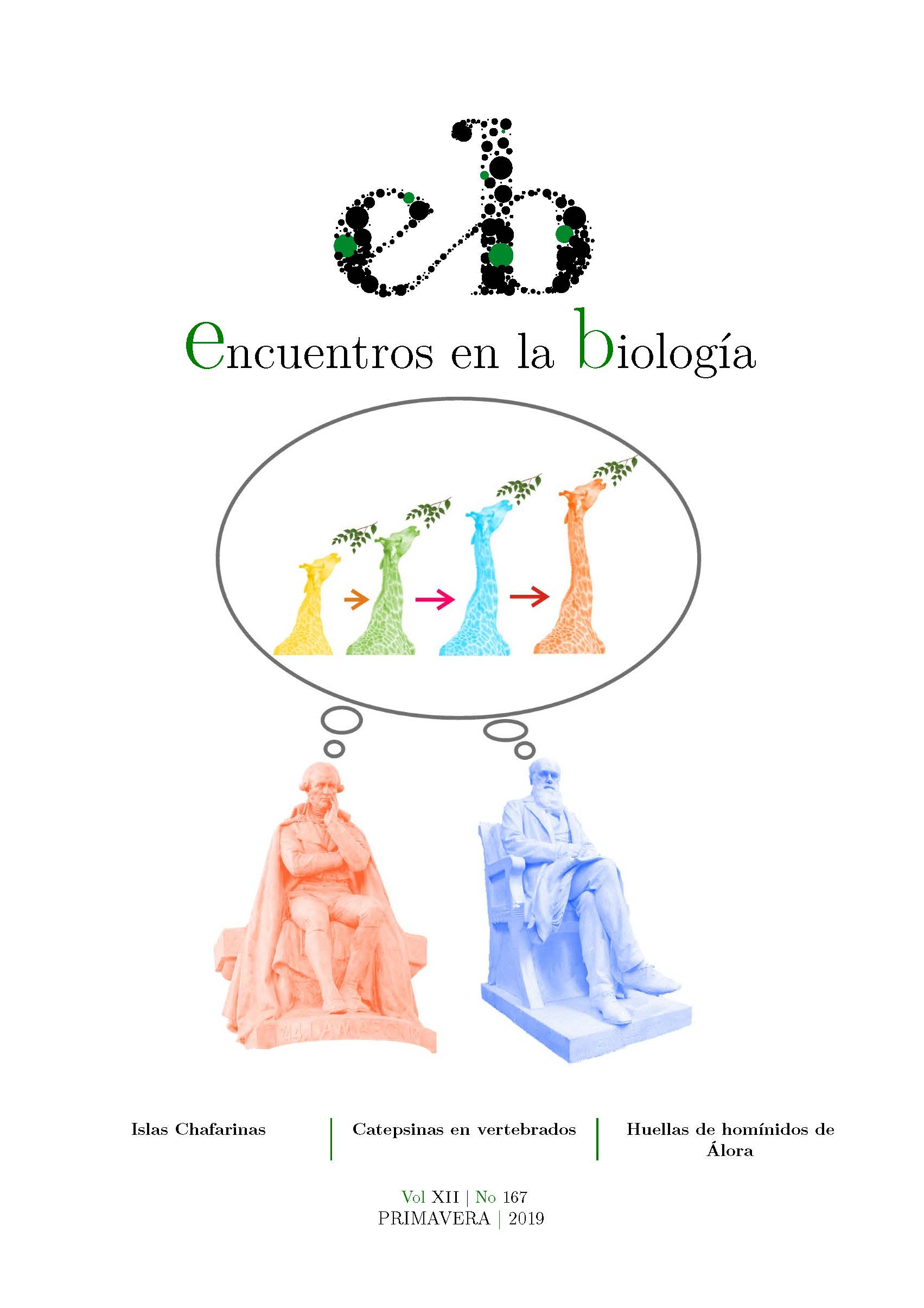“When ‘The sleep of reason produces monsters’: On the supposed hominid footprints of Álora.
DOI:
https://doi.org/10.24310/enbio.v12i167.17483Keywords:
Alora, footprints, hominidsAbstract
As the Dublin playwright George Bernard Shaw said, “Imagination is the beginning of creation. You imagine what you desire, you pursue what you imagine and, finally, you create what you pursue.” This phrase is compatible with the process of scientific creativity, which also requires high doses of imagination. However, as with so many other things in this life, letting oneself be carried away by an excess of fantasy can be counterproductive, as illustrated by Francisco de Goya in one of his engravings from the series “Los Caprichos,” titled “The sleep of reason produces monsters”. On this work, in which the background of despair that precedes the famous black paintings of the Baroque genius can be glimpsed, Adelardo López de Ayala, a contemporary writer of the Aragonese painter, pointed out in a manuscript preserved in the National Library: “when men do not hear the cry of reason, everything becomes visions.”
Downloads
Metrics
Publication Facts
Reviewer profiles N/A
Author statements
Indexed in
-
—
- Academic society
- N/A
- Publisher
- Uma Editorial. Universidad de Málaga
References
Johanson DC y otros. A new species of the genus Australopithe- cus (Primates: Hominidae) from the Pliocene of eastern Africa. Kirtlandia 28: 1-14, 1978.
Masao FT y otros. New footprints from Laetoli (Tanzania) provide evidence for marked body size variation in early hominins. eLife 5: e19568. DOI: 10.7554/eLife.19568, 2016.
GierliÒski GD y otros. Possible hominin footprints from the late Miocene (c. 5.7 Ma) of Crete? Proc. Geol. Ass. 128: 697-710, 2017.
Lewis AN y otros. Hominin footprints from Early Pleistocene deposits at Happisburgh, UK. PLoS ONE 9(2): e88329. doi: 10.1371/journal.pone.0088329, 2014.
Arboleya M y otros. Timing and nature of Quaternary fluvial inci- sion in the Ouarzazate foreland basin, Morocco. J. Geol. Soc. 165: 1059-1073, 2008.
Azañón JM y otros. Calcrete features and age estimates from U/Th dating: Implications for the analysis of Quaternary erosion rates in the northern limb of the Sierra Nevada range (Betic Cordillera, southeast Spain). Geol. Soc. Am. Spec. Pap. 416: 223-239, 2006.
García-Aguilar JM y otros. Incisión fluvial del río Darro durante el periodo 1890-2010 en el sector urbano de Granada (Alhambra- Valparaíso, España) determinada a partir de fotografías históricas.
An. Geog. Univ. Complutense 36: 307-320, 2016
Pérez Peña JV y otros. Análisis de la erosión diferencial en el Pleis- toceno superior para las sub-cuencas de Guadix y Baza. En: La cuenca de Guadix-Baza. Estructura, tectónica activa, sismicidad, geomorfología y dataciones existentes (Sanz de Galdeano C y Pe- láez JA, eds.), 241-262, Granada, 2007.
Downloads
Published
How to Cite
Issue
Section
License
Esta obra está bajo licencia internacional Creative Commons Reconocimiento-NoComercial-CompartirIgual 4.0.
Esta revista provee acceso libre inmediato a su contenido bajo el principio de hacer disponible gratuitamente la investigación al público. Todos los contenidos publicados en Encuentros en la Bilogía están sujetos a la licencia Creative Commons Reconocimento-NoComercia-Compartirigual 4.0 cuyo texto completo puede consultar en <http://creativecommons.org/licenses/by-nc-sa/4.0>
Se pueden copiar, usar, difundir, transmitir y exponer públicamente, siempre que:
Se cite la autoría y la fuente original de su publicación (revista, editorial y URL de la obra).
No se usen para fines comerciales.
Se mencione la existencia y especificaciones de esta licencia de uso
Los derechos de autor son de dos clases: morales y patrimoniales. Los derechos morales son prerrogativas perpetuas, irrenunciables, intransferibles, inalienables, inembargables e imprescriptibles. De acuerdo con la legislación de derechos de autor, Encuentros en la Biología reconoce y respeta el derecho moral de los autores/as, así como la titularidad del derecho patrimonial, el cual será cedido a la Universidad de Málaga para su difusión en acceso abierto. Los derechos patrimoniales, se refieren a los beneficios que se obtienen por el uso o divulgación de las obras. Encuentros en la Biología se publica en open access y queda autorizada en exclusiva para realizar o autorizar por cualquier medio el uso, distribución, divulgación, reproducción, adaptación, traducción o transformación de la obra.
Es responsabilidad de los autores/as obtener los permisos necesarios de las imágenes que están sujetas a derechos de autor.
Los autores/as cuyas contribuciones sean aceptadas para su publicación en esta revista conservarán el derecho no exclusivo de utilizar sus contribuciones con fines académicos, de investigación y educativos, incluyendo el auto-archivo o depósito en repositorios de acceso abierto de cualquier tipo.
La edición electrónica de esta revista esta editada por la Editorial de la Universidad de Málaga (UmaEditorial), siendo necesario citar la procedencia en cualquier reproducción parcial o total.






